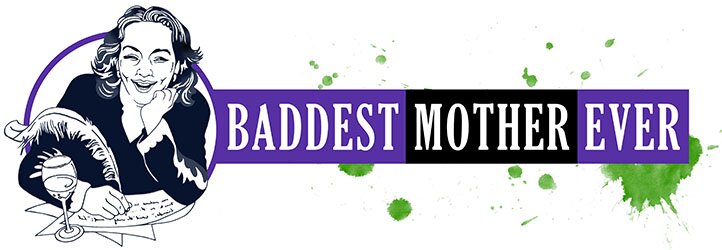Have you ever read the Robert Burns poem, “To a Louse?” It’s about a woman sitting in church showing off her fancy bonnet…but she doesn’t realize that a fat gray louse is crawling around on it.
Ye ugly, creepin, blastit wonner, Detested, shunned by saunt an’ sinner,How daur ye set your fit upon her,
Sae fine a lady!
Gae somewhere else and seek your dinner,
On some poor body.
She tosses her head with pride that she’s the center of attention, unaware that the louse is the reason people are staring at her and pointing. The Scots dialect makes a little translation necessary, but you get the drift. My favorite part of the poem is the conclusion, which I’ll render into Englishish:
And would some Power the small gift give usTo see ourselves as others see us!
It would from many a blunder free us
Oh, what a gift God might give us, to see ourselves as others see us. It would from many a blunder free us.
See that new logo up there? It was designed and drawn by my friend Jose Luis Silva. You might remember him from such favorites as “Dust to Dust” or “Short But Sweet.” He’s a genius and I trusted him with my face (which for a woman of a certain age is no small feat).

At L’Express on Park Avenue
Luis asked me for some guidance on which direction I’d like to go with the logo, so I told him that I wanted something black and white, friendly and fun, maybe a caricature. I suggested that he use this picture of me that he took when we were in New York for our friend Spencer’s memorial service in January. I love this picture because it surprised me. For once I didn’t see a wrinkle or a size or gray hair–I saw me. The laughing me, the loving me, the feeling me. What a gift Luis gave me in this snapshot–to see myself as others see me.
Then he recreated it for the logo. The first version was a pretty exact replica of this photo, but my giggle covered by splayed fingers looked too much like Hannibal Lecter in a mask. I asked him to try it again with my hand in a different position. He perfected the hand, but my now-uncovered smile looked a lot like The Joker’s creepy slash. Luis listens to a lot of death metal, so I was thankful there wasn’t blood dripping from my eyeballs or a baby head clenched between my teeth (maybe in the next version!).
I said, “Um…can you change my mouth? I look a little…evil.” His reply was, “But, sweetheart, you ARE EVIL.” And my answer? “Of course I am, but I don’t want to LOOK EVIL. This is marketing.” Luis commented on the interesting challenge that caricature poses for the artist: finding the balance between rendering your subject, but exaggerating primary features for effect.
The next version looked far less evil, but now I was looking too nice. Jimmy Carter nice. (Isn’t this starting to sound like a stereotypical “Honey, would you move the couch over there so I can see how it looks” dialogue?) At this point, I knew he had the hair, the eyes, the face shape, the nose, the clothes, the wine–everything was right except my stupid mouth. I muttered, “I don’t look like THAT!” Then I walked to a mirror, put my chin on my hand and smiled…and discovered I DO look like that.
Luis’ next version was The One. He gave me some new smaller teeth and I was finally comfortable. It was a done deal when I pulled the image up onscreen and turned my laptop to Carlos. He took one look at it and chirped, “Mama!”
I am so grateful to have a friend who can see me. And show me to myself. And tolerate me through the revisions that I needed before I could see myself. Oh what a gift!
If you would like to hear “To a Louse” in a charming rendition, click on the following image to hear an award winning recitation!

Hear the winner of the William Law Memorial Trophy from Calderwood Primary performs ‘To a Louse’.




